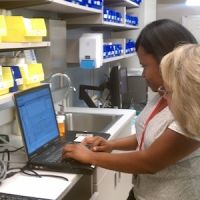Researchers from SUNY Upstate Medical University in Syracuse based their findings on a study of telemedicine visits at 15 prison facilities in New York state between an endocrinologist and 106 male diabetic inmates.
The prisoners were already being treated by a primary care physician. The use of telemedicine resolves both problems of transport and security for doctor visits and access to specialists.
In terms of profile, the prisoners had elevated HbA1c levels. Improvements were found in spite of a limited follow-up. Patients with the highest levels showed the greatest results - a 1.3 percent decrease. Similarly, researchers recorded gains in blood pressure and lipid control.
Consultations were undertaken with a 52-inch flat-panel LCD display and integrated audio-visual control system allowing the patient, a facility nurse and the endocrinologist to communicate in real time.
Lab results were sent by fax to the endocrinologist before the consultations. Researchers noted that a glucose meter with the function of sending results remotely would have assisted the physician.
Follow-up was also a problem owing to prisoner availability or prison cancellation. Follow-up visits for all patients within two to four months were recommended but only 48.7 percent of inmates complied. Only 58 had a minimum of one follow-up HbA1c level recorded.
Source: FierceHealthIT
Image Credit: Pixabay



























